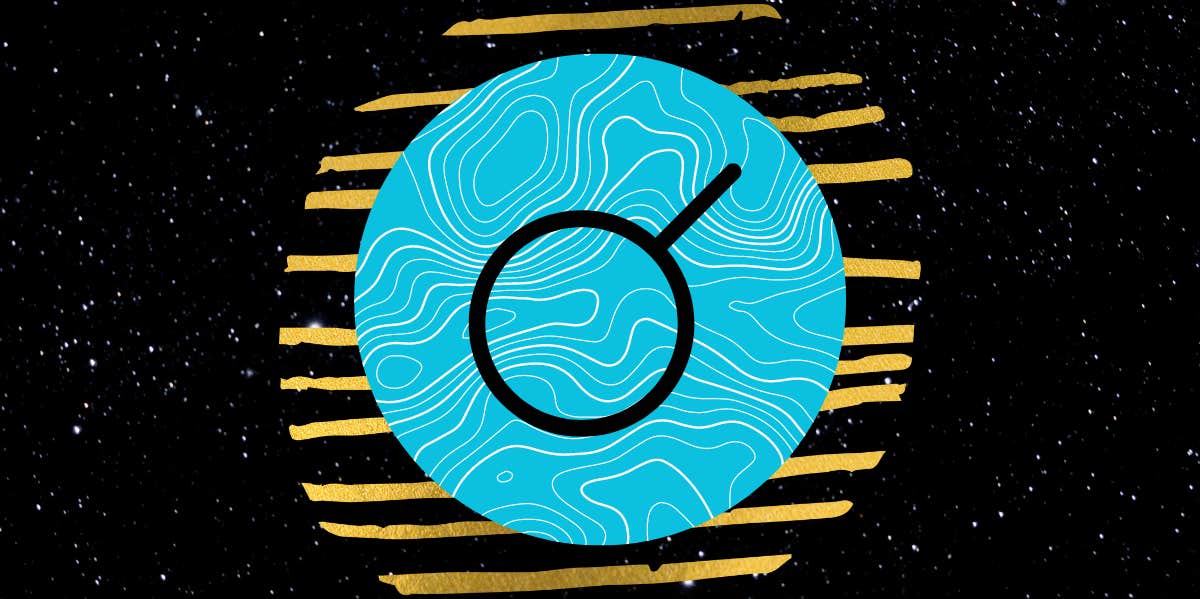What A Conjunction In Astrology Means And How The Planetary Aspect Affects You
They occur both in the natal chart and as the planets transit daily.
 Vladislav_lotenko, Sparklestroke, nakata / Canva
Vladislav_lotenko, Sparklestroke, nakata / Canva When reading a birth chart, there are five major aspects one needs to look out for: conjunction, trine, sextile, square and opposition. While there are a number of minor aspects as well, such as the quincunx and semi-sextile, the major aspects have a more noticeable outward effect on your life.
The first three major aspects, conjunction, sextile and square, are beneficial aspects that have positive effects on the native while the square and opposition are considered negative aspects, creating challenges and obstacles.
What is a conjunction in astrology?
A conjunction in astrology is formed when two or more planets or points are within 0 to 10 degrees from each other on the zodiac wheel. Some astrologers prefer a wider angle for conjunctions and consider even 20 to 30 degrees for this aspect. But the energies are more diluted when a conjunction is more than 10 degrees wide.
Basically, when two or more planets or points are conjunct in a chart, their energies become blended.
This can be positive if the planets and points are synergistic. For example, Mercury conjunct Venus is a positive aspect and bestows on the native the ability to charm people with their words. Similarly, Sun conjunct Midheaven is a very powerful conjunction aspect and is found in the birth chart of highly ambitious people.
But a conjunction can have negative effects on the native as well if the planets and points involved don't blend well with each other or are enemies.
For example, Saturn conjunct Ascendant is a heavy placement and leads to self-esteem issues in the native. And Venus conjunct Pluto can make a person prone to getting taken advantage of sexually by authority figures.
Also, when three or more planets form a conjunction aspect in a person's birth chart, it's called a stellium. This is a rare occurrence in astrology and reveals unique abilities and a powerful personality.
Conjunction aspects in the birth chart
Conjunction aspects in an astrological chart can happen in the same zodiac sign and house, or in adjacent houses/signs if the points and planets linked together are near a cusp.
When the conjunction is in the same zodiac sign and house, the energies of the planets and points blend well together. This is an easy aspect. Even the difficult conjunctions behave much better in such a configuration.
For example, when Venus (the planet of love) is conjunct Jupiter (the planet of luck and fortune) in the second house in Leo, it makes the native almost the luckiest person in the world (figuratively). Money, love, and opportunities for social advancement come easily to such people.
When conjunctions are in adjacent houses and/or signs, the effect can be a little tricky, depending on the unique combinations.
For example, a Sun and Moon conjunction in Scorpio creates a powerful personality with a strong gut instinct. But if the conjunction is in disjointed houses, where the Sun is in the last few degrees of the third house and the Moon in the first few degrees of the fourth house, it can create a disconnect between the more extroverted Sun and the more introverted Moon.
An interesting thing to note is that 29 degrees is quite special in astrology. So conjunctions between 29-degree planets in the previous house and the planets in the first few degrees of the next house behave a little differently from regular adjacent sign/house conjunctions.
Transiting conjunctions
Transiting conjunctions are a little different from natal or synastry conjunctions. These occur when a transiting planet or point forms a conjunction with a natal planet or point.
When the transiting planet or point is the same as the natal planet or point, the conjunction phenomenon is called a return. For example, Saturn return is the astrological term for a transiting Saturn forming a conjunction with one's natal Saturn.
When the transiting planet or point is not the same as the natal planet or point, the conjunction can create fated things to happen in one's life, both good and bad.
For example, unmarried people often meet their life partner when transiting Jupiter forms a conjunction aspect with their natal Descendant. Similarly, when transiting Neptune forms a conjunction with one's Ascendant, it can lead to disillusionment with life and the desire to uproot everything and start fresh.
Valeria Black is a tarot reader and astrology nerd with a dash of wicked humor on the side. Follow her on Instagram @queen.of.vands for more.

